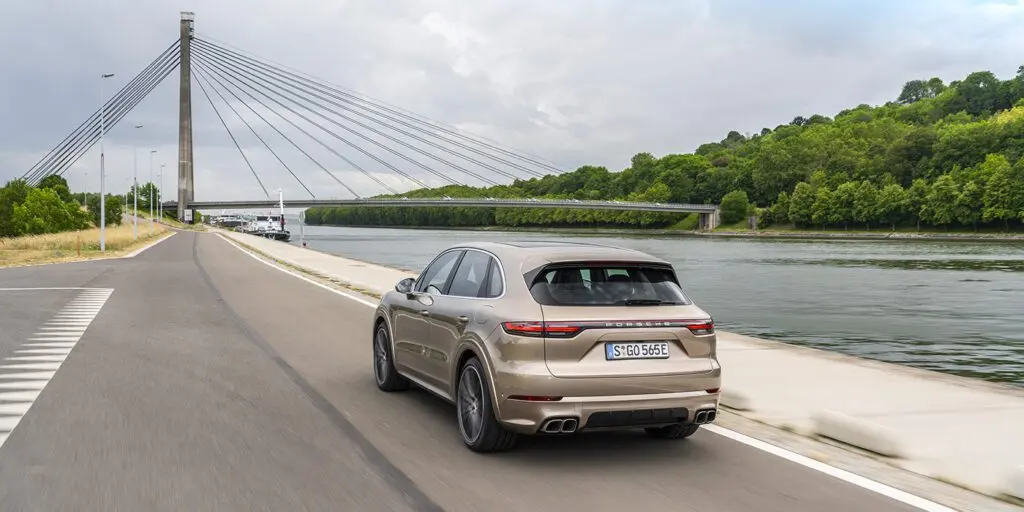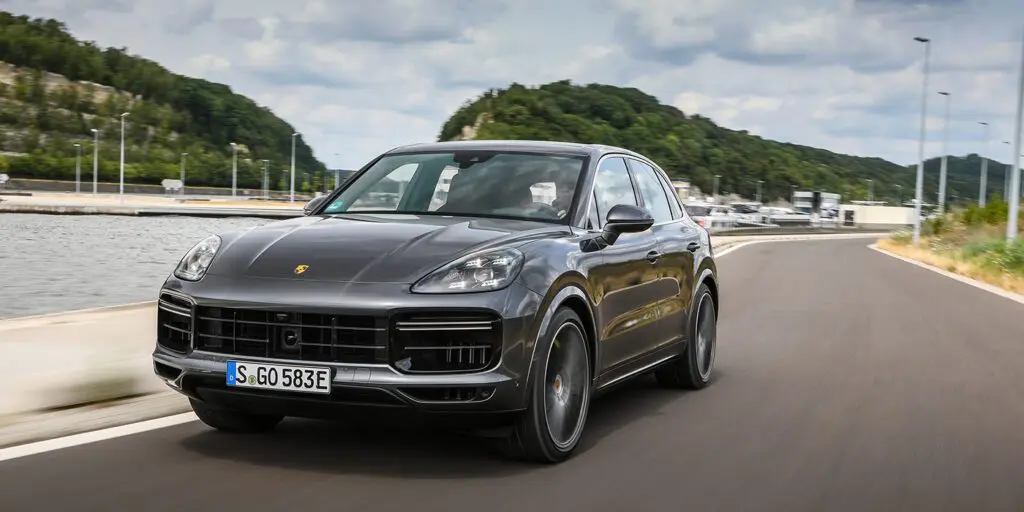
Test drive Porsche Cayenne Turbo S E-Hybrid
Hybrid technologies are no longer toys for geeks, but this does not mean that V8 engines are out in circulation: in combination with an electric motor, they promise an unprecedented balance of dynamics and efficiency.
The silver crossover accelerates silently when entering the Autobahn. The speed is rapidly increasing, but the cabin is still quiet - the gasoline engine is silent, and sound insulation and double side windows reliably protect against road noise. And only at the limit for the electric motor of 135 km / h, the V-shaped "eight" comes to life with a noble bass somewhere in the bowels of the engine compartment.
The fact that the history of Porsche hybrid cars began with the Cayenne, which can be given a family status with some stretch, is not at all surprising. A crossover with this type of drive was shown back in 2007, but mass production began in 2010 with the arrival of the second generation car. Four years later, the E-Hybrid version was able to be recharged from the mains. But never before has a hybrid Cayenne been the fastest in the range.
Moreover, today the Cayenne Turbo S E-Hybrid is the most powerful crossover not only of the brand, but of the entire VAG concern. Even the Lamborghini Urus lags behind the hybrid Cayenne by 30 hp. with., however, wins him two tenths of a second when accelerating to 100 km per hour. But could it have been imagined a few years ago that hybrid technologies would progress at such a rate?

Total 680 HP with. the hybrid Cayenne develops the efforts of the 4,0-liter V8, familiar to us from the Turbo version, and an electric motor. The latter is integrated into the automatic transmission housing and is synchronized with the gasoline engine via an electronically controlled clutch. Depending on the selected mode and the state of the battery, the system itself determines which of the engines to give priority at the moment, or completely turns off the internal combustion engine.
But at speeds over 200 km / h, there is no need to choose - in such conditions, the electric motor simply needs the help of a gasoline engine. And if you push the accelerator pedal even more, the Cayenne rushes forward with lightning speed. The power reserve is so huge that the crossover does not care at what speed it accelerates. In these modes, you have to pay particular attention to the navigation prompts on the head-up display, because three hundred meters before the desired turn are almost imperceptible.

By default, the Cayenne Hybrid runs in E-Power mode and is only driven by a 136 horsepower electric motor. It seems to be a little, but for a measured ride in the city, it hardly takes more. The electric motor draws about 19 kWh from the battery for every 100 km, and the declared mileage on electric traction is 40 kilometers. In Germany, hybrids with such a range are equated to electric cars, which gives them the right to move in the public transport lane and use free parking. And in some EU countries, the owners of such cars are also exempt from tax.
But this is theory, but in practice the Hybrid Auto mode will be the most popular. It connects to the electric motor V-shaped gasoline "eight" with double turbocharging, and the control electronics determines when and which engine to give priority, based on the maximum possible fuel economy. In hybrid mode, there are two additional settings, E-Hold and E-Charge, which can be activated inside a special menu on the center screen.

The first allows you to save the available battery power so that you can use it where you need it. For example, in a special ecological zone where the movement of cars with internal combustion engines is prohibited. And in the E-Charge mode, as you might guess from its name, the battery gets the maximum possible charge without wasting it on the movement of the car.
Two more modes are familiar from other Porsche models. When switching to Sport and Sport Plus, both motors run continuously. But if in Sport mode the electronics still make sure that the battery charge does not fall below a certain level, then in Sport Plus the car gives everything it can, without a trace. Starting with two pedals, the Cayenne Turbo S E-Hybrid accelerates from 0 to 100 km / h in just 3,8 seconds, but the linear acceleration is particularly impressive. Maximum 900 Nm of thrust is available in a wide range of 1500–5000 rpm, and all transient modes are smoothed out by an electric motor.
Together with two motors and a gearbox, the chassis also goes into combat mode. Air bellows lower the crossover to a minimum of 165 mm, active shock absorbers are reconfigured for the most accurate reactions, and the roll suppression system neutralizes the slightest deviations of the body from the horizontal. With these settings, even the 300 kg heavy Cayenne is very easy to refuel in corners.
It's nice that the basic version of the Turbo S E-Hybrid is equipped with carbon-ceramic brakes. True, you will have to get used to the specific feedback of the pedal. This is due to the hybrid component. When you apply the brake, the car slows down with regenerative braking before the hydraulics are activated. At first it seems that the hybrid Cayenne is either under-braking or slowing down too much. But in a day you still find a common language with the brake system algorithm.

The lithium-ion battery that powers the electric motor on the hybrid Porsche Cayenne is hidden in the trunk underground, so they had to say goodbye to the stowaway, and the total luggage compartment volume decreased by 125 liters. Using the standard 7,2kW inverter and 380V 16-phase socket, it takes only 2,4 hours to fully charge the battery from the 10A 220-phase network. It will take six hours to recharge from a regular XNUMX-amp XNUMX-volt network.
All the same applies to the hybrid Cayenne Coupe, which itself was introduced relatively recently. There is nothing to tell about the differences in the behavior of cars with two types of bodies - the Coupe has the same power unit, almost the same weight and exactly the same numbers in the table of technical characteristics. The only difference is that the hybrid Cayenne Coupe is able to conquer the German autobahns not only quietly, but also quite beautifully.
| Body type | Crossover | Crossover |
| dimensions (length / width / height), mm | 4926/1983/1673 | 4939/1989/1653 |
| Wheelbase, mm | 2895 | 2895 |
| Curb weight, kg | 2415 | 2460 |
| engine's type | Hybrid: turbocharged V8 + electric motor | Hybrid: turbocharged V8 + electric motor |
| Working volume, cubic meters cm | 3996 | 3996 |
| Max. power, l. with. at rpm | 680 / 5750-6000 | 680 / 5750-6000 |
| Max. cool. moment, Nm at rpm | 900 / 1500-5000 | 900 / 1500-5000 |
| Transmission, drive | Automatic 8-speed full | Automatic 8-speed full |
| Max. speed km / h | 295 | 295 |
| Acceleration from 0 to 100 km / h, s | 3,8 | 3,8 |
| Fuel consumption (NEDC), l / 100 km | 3,7 – 3,9 Feet | 3,7 – 3,9 Feet |
| Price from, USD | 161 700 | 168 500 |
